10 albums we wish were available in Spatial Audio
Our AirPods Max are just begging for these albums
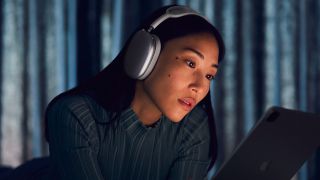
If you want to know the most worthwhile Spatial Audio mixes currently available to blast into your headphones, Techradar’s list of the 10 best is an unbeatable place to start. For showcasing what makes Apple Music's Spatial Audio worthwhile where music, rather than movies, is concerned, these selections are outstanding.
That’s all well and good. But as with every new music format, it’s more often than not the long-established and the obviously great who get first dibs. And we don’t think that’s right - after all, Fleetwood Mac (to choose an example not entirely at random) have loads of great songs and are deeply popular to this day - but it doesn’t automatically follow that Fleetwood Mac songs will a) sound better in a Spatial Audio mix, or b) they’re the best songs for demonstrating just what Spatial Audio is capable of.
The list of albums that are deserving of the Apple Music Spatial Audio treatment is, of course, both extensive and subjective. But if we’re writing a wish-list, we have to start somewhere. Right? So here are 10 albums we’re convinced could make Spatial Audio seem like the only way to listen to music…
1. Miles Davis - In A Silent Way

At the time of this album’s release, Miles Davis was a towering figure in American music and debate about In a Silent Way raged. Is it jazz? Is it rock? It’s definitely electric… And it was edited down from a single three-hour session by producer Teo Macero - is that even allowed?
What In a Silent Way unarguably is, though, is the sort of open, spacious and precise recording that is crying out for the Spatial Audio treatment. The idea of being right in amongst all that virtuosity, all of that extraordinarily lyrical playing, all those poignant murmurs and silences, all that warmly analog tonality (and all that endlessly repeating, relentless hi-hat playing), is compelling.
2. Can - Tago Mago

For a band made up of such accomplished musicians, there was always a very agreeable looseness to Can. Many of their most celebrated recordings emerged from seemingly endless jam sessions, and sometimes - throughout Tago Mago, for example - it really shows.
There are many reasons this album would suit a Spatial Audio mix, with the numerous fine details and transient sounds occurring in what’s currently the background high among them. But most of all, the idea of sitting right there on Jaki Liebezeit’s drum stool while he demonstrates his absolute mastery of the kit is almost too exciting to bear.
Get daily insight, inspiration and deals in your inbox
Get the hottest deals available in your inbox plus news, reviews, opinion, analysis and more from the TechRadar team.
3. The Upsetters - Super Ape
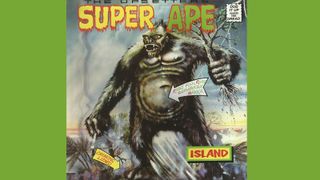
The late, lamented Lee ‘Scratch’ Perry was an acknowledged master of the recording studio, capable of extracting the most remarkable and singular sounds from the TASCAM 8-track in his legendary Black Ark studio in Kingston, Jamaica.
The fundamental sonic signature of dub reggae - subterranean bass, never-ending resonance and reverb, bone-dry drums and, most of all, massive empty spaces - is almost entirely Perry’s invention, and Super Ape (credited to his studio band The Upsetters) is a leading example of the type. And it’s made for Spatial Audio, which is so adept at separating and individualizing specific elements of a recording. Sometimes the absence is as important as the presence, as a Spatial Audio mix of this album would prove. I guarantee it.
4. The Smiths - The Queen is Dead

Before Morrissey became a tinfoil-hatted irrelevance, he was the darkly hilarious Alan Bennett of indie. And before Johnny Marr became a master of the Rickenbacker 330 he was, well, a master of the Rickenbacker 330. For a period in the middle of the 80s, The Smiths were the absolute embodiment of indie - preeminence they achieved thanks to an unbeatable combination of deft musicianship, superior writing and skilful production.
This album is already alive with the sensation of musicians operating as a single unit, bearing down on the music as one entity and giving it flight as a result. A Spatial Audio mix could only enhance their impact, allowing each carefully considered strand of the recording to be spotlit even as it integrates seamlessly into the recording as a whole.
5. PJ Harvey - Rid of Me
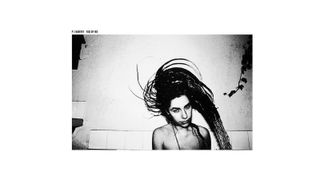
By the time her second album was released, Polly Jean was already preparing to disband her eponymous trio and go it fully alone. But before that happened, she (and Island Records) enlisted the singular talents of Steve Albini to ‘record’ (not ‘produce’, goodness me no) Rid of Me.
If it’s rawness you want, aggression and attack, this album has it in spades. Albini’s insistence in festooning the recording studio with microphones to capture every shred of information, resulted in a sound genuinely like no other. If Harvey’s assertion that Albini is “the only person I know that can record a drum kit and it sounds like you’re standing in front of a drum kit. It doesn’t sound like it’s gone through a recording process or it’s coming out of speakers” holds true in stereo, imagine what it would sound like as a Spatial Audio mix.
6. The Roots - Things Fall Apart
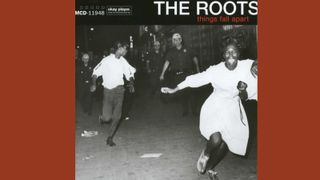
The Roots’ insistence on an organic, instrument-based sound that could be convincingly reproduced on stage is not the only thing that set them apart from the majority of turn-of-the-century hip-hop outfits, but it didn’t do any harm. And when it’s combined with an absolute torrent of creativity, the result is the timeless Things Fall Apart.
There’s so much going on during the course of this record, with competing elements both where rapping and its musical backdrop are concerned. A sympathetic Spatial Audio mix would allow proper insight into the cut’n’paste elements, Questlove’s whip-crack drumming, Black Thought’s peerless flow… In fact, the more I think about it the more I insist it happens.
7. Explosions in the Sky - The Earth is Not a Cold Dead Place
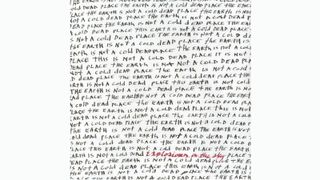
When a ‘pop’ record is just as oppressive as it is spaciously airy, when it’s entirely instrumental, when its 45-minute running time is long enough for just five tracks, and when its need for significant dynamic headroom is as pronounced as it is here, well… surely it’s the sort of thing Spatial Audio was made for?
So much of what makes The Earth is Not a Cold Dead Place a noteworthy recording is the attention paid to harmonics, to the decay of notes, the actual, literal sound. And the more space these elements have to stretch out, the greater the distance between individual sounds, the more immersive and absorbing a recording it will become.
8. Sergei Prokofiev/Evgeny Mravinsky/Leningrad Symphony Orchestra - Romeo and Juliet Suite 2

Yes, it’s a crowd-pleaser and one of the greatest hits of modern classical music (you know an orchestral piece is relatively contemporary when it includes saxophones), but there’s a reason for that: Romeo and Juliet is a work of straight-ahead genius.
Orchestral music benefits no end from the Spatial Audio treatment. The layout of the stage, its width, depth and relative height are made explicit rather than hinted at (as they are in stereo). And this specific recording in particular would sound spectacular as a Spatial Audio mix - not only would the tiny inputs from whoever’s playing the triangle at the back of the stage become more pronounced (for example), whoever is coughing and shuffling in their seat in the audience could be identified and punished. Unless some sort of statute of limitations applies, of course.
9. Burial - Untrue
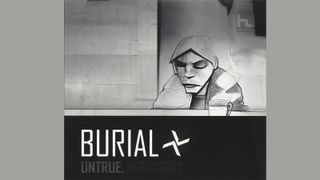
There’s something ghostly and trance-like about Untrue - if ‘falling asleep on the night-bus and incorporating the external sounds into your dreams’ has an audio equivalent, this album could well be it. It’s not easy to be soothing, unsettling and downright strange over the course of a single album, but Untrue is all of these things, all at once and all the time.
It’s this tangible sense of otherness and of transience that would most obviously benefit from the Spatial Audio treatment. Burial is shooting for a feeling of impermanence and dislocation here, and the amount of (no pun intended) space that a Spatial Audio mix provides can only accentuate it. Plus being in amongst those beats would never get old.
10. Eartheater - Phoenix: Flames are Dew Upon My Skin

For her fourth album, Alexandra Drewchin ditched the rather overwhelming electronic basis of her previous recordings in favour of sweet-and-sour string arrangements. Her startlingly limber, versatile voice also grew in prominence, and the result remains one of this decade’s most remarkable albums.
No doubt a Spatial Audio mix would render it more remarkable still. To be among the massed string instruments, with the harp given its own little platform, while Drewchin croons and howls and mutters her stories. To be able to make sense of her wordplay, rather than grasping at snatches of it as it’s engulfed by keening and scraping instrumentation. To find out exactly what is going on here. Is it too much to ask?
Simon Lucas is a senior editorial professional with deep experience of print/digital publishing and the consumer electronics landscape. Based in Brighton, Simon worked at TechRadar's sister site What HiFi? for a number of years, as both a features editor and a digital editor, before embarking on a career in freelance consultancy, content creation, and journalism for some of the biggest brands and publications in the world.
With enormous expertise in all things home entertainment, Simon reviews everything from turntables to soundbars for TechRadar, and also likes to dip his toes into longform features and buying guides. His bylines include GQ, The Guardian, Hi-Fi+, Metro, The Observer, Pocket Lint, Shortlist, Stuff T3, Tom's Guide, Trusted Reviews, and more.

